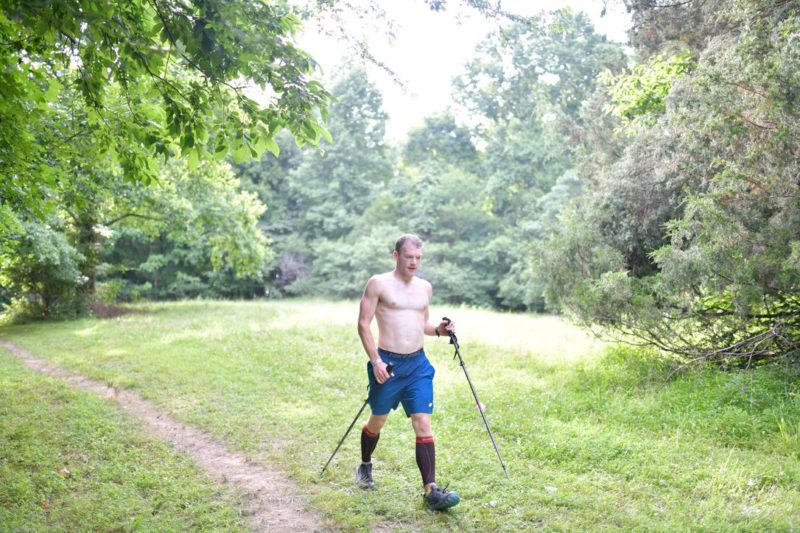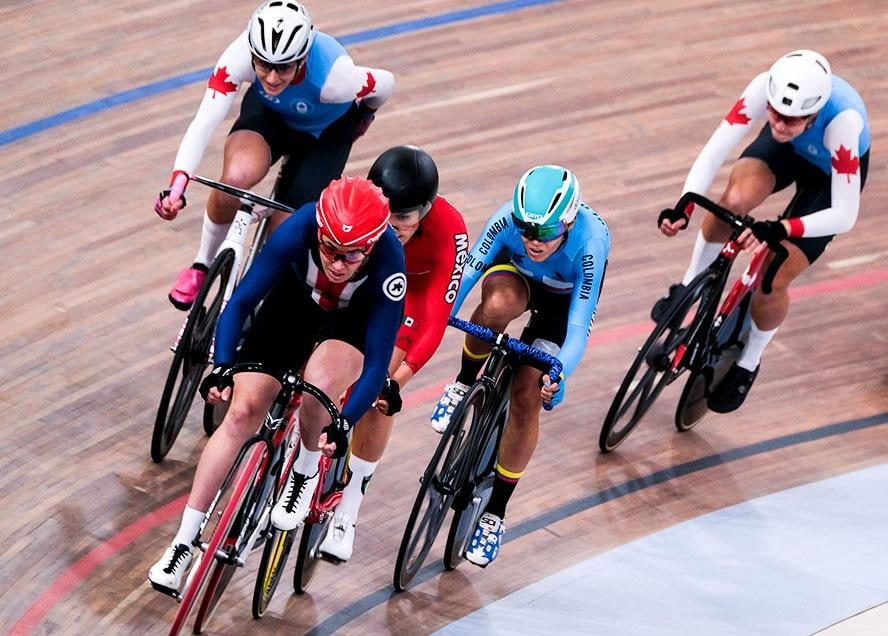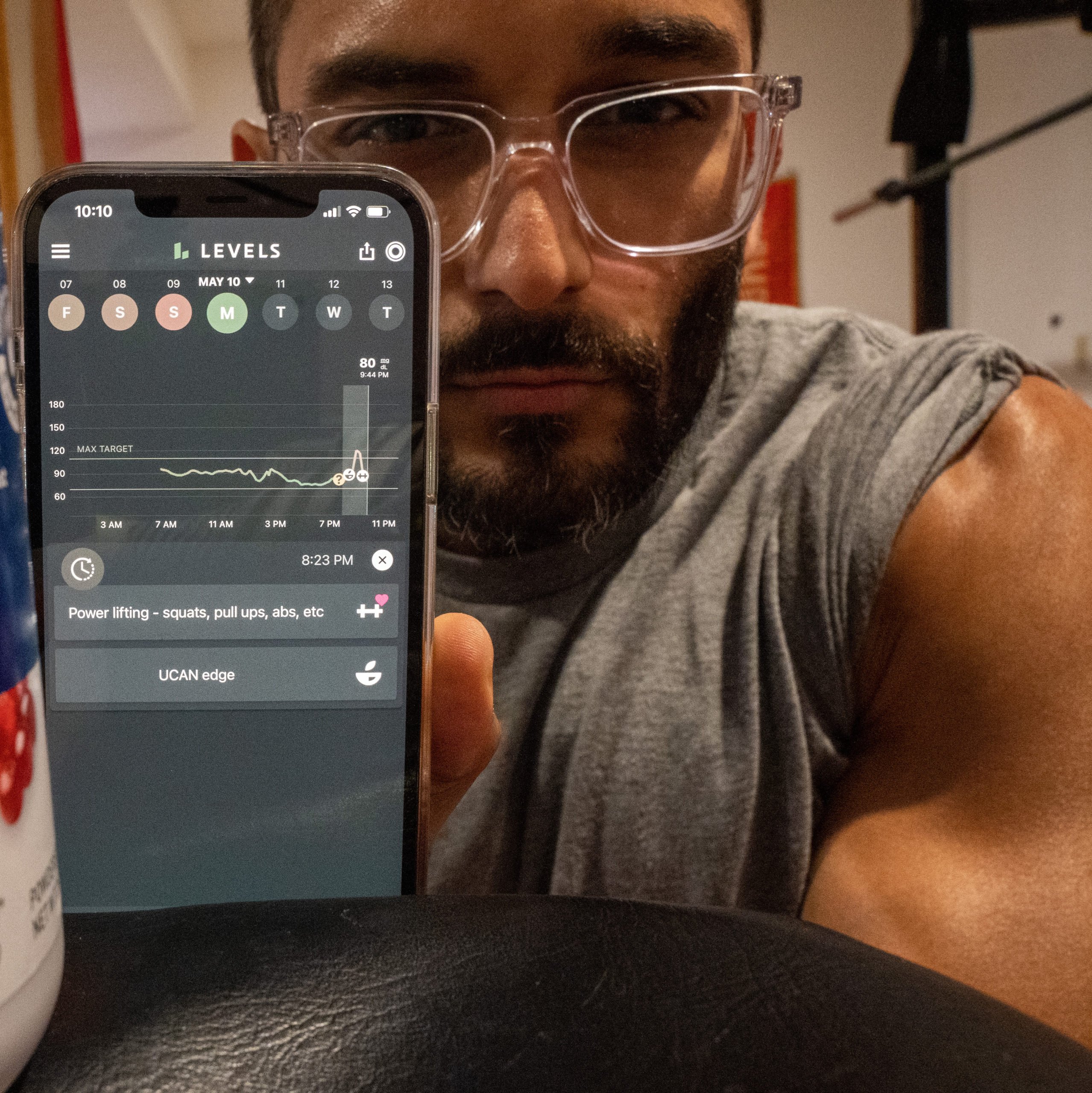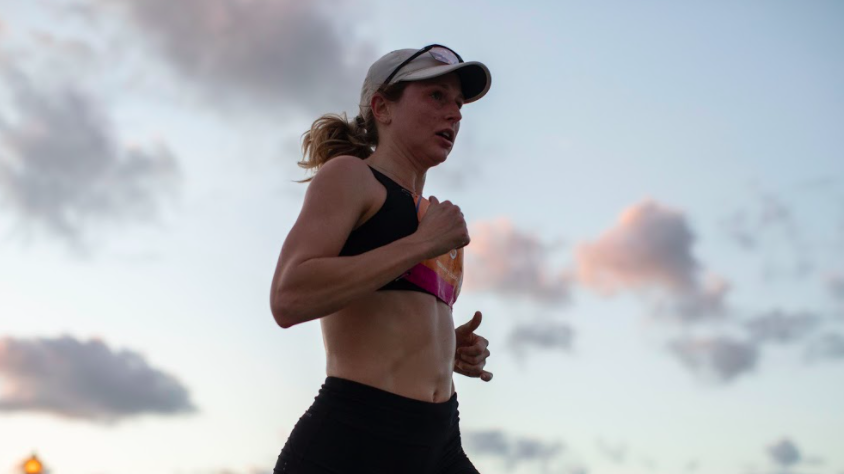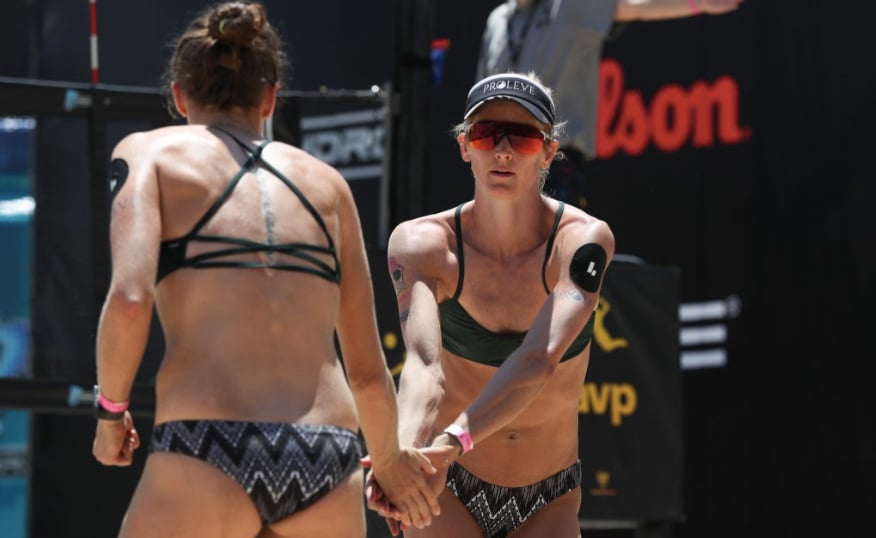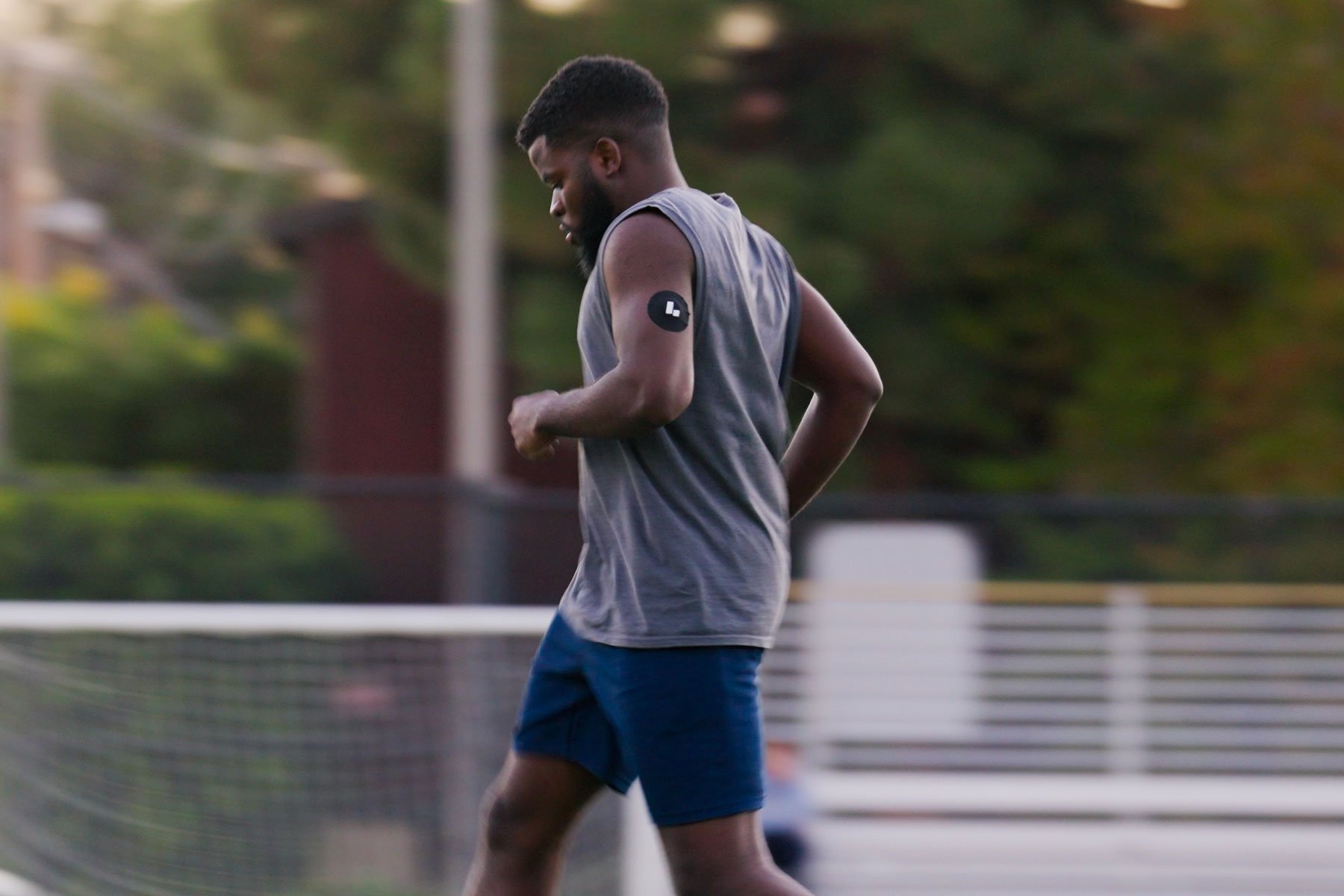Dan McGlinn is a 25-year-old designer and crypto content creator. During the pandemic, he took up running to push himself and learn more about his body. He quickly progressed through some early efforts and decided to tackle an open-ended endurance race and see how far he could go.
An engineer by training, he takes a data-driven approach to everything he does. He used Levels to track and adapt his nutrition before, during, and after the race. Here’s what he learned.
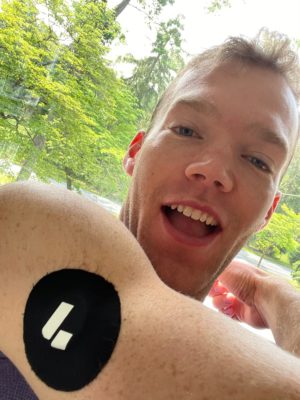
“How can you challenge yourself to know yourself better?” Like many, this is a question I found myself asking during the pandemic. I had already started running before lockdown, but now it became a focus. Running is a way of pushing the body to its physical limits and learning how to rise to the challenge.
I had done some shorter races but was inspired by the community and the challenge of an endurance event known as The Mid-State Mile in Tennessee. The race has no fixed distance: you simply run a 1.1-mile trail loop (with 340 feet of vertical gain) over and over until you either give up or fail to complete the loop in 20 minutes. My goal was to run a total marathon distance (26.2 miles), something I’d never done.
Ultra training comes down to three things: nutrition, stamina, and fitness. The body needs fuel to exert itself steadily; the heart and cardiovascular systems need to be strong; the mind and legs must endure the grueling hills. While some runners race fasted, forcing their body into a fat-burning state, most ultra runners rely on carbs for fuel. But that strategy also runs the risk of bonking, or having a blood-sugar spike and crash that leaves you depleted and unable to continue. I knew that understanding my glucose response would be crucial to my success and was grateful to use a CGM to get that data.
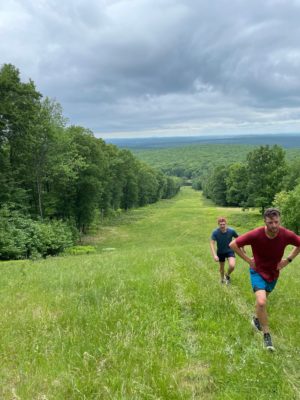
Before the Race: Dialing in Nutrition During Training
Before race day, I needed to learn how to fuel my body and how not to fuel my body. (I have always had a hankering for sweets and was curious how that would affect my training. It turns out: Not great!)
Physical preparation for the race requires a mix of long, low-intensity jogs or climbs and high-intensity strength work. Being a data nerd, I was glad that Levels would integrate smoothly with my watch to sync my workouts to make correlations between glucose and effort.
“Hunger doesn’t mean I need food. During times I felt hungry, my glucose profile often showed a peak and steep crash. These crashes between meals were exhausting and signaled hunger pangs.”
I used those low-intensity long runs to experiment with different eating strategies before and during the workout. In the workouts where I ate too little, I completely hit a wall and bonked out. Other times, I ate way too much and had to stop because my stomach was so upset. I experimented with carb-heavy and high-fiber foods, but those left me bloated. Eventually, I found I had my best long runs when I ate little by little over three or four hours before, during, and after, maintaining stable glucose the whole time.
Then I experimented with different ways of delivering those calories that would be convenient to prep and consume. For pre-race eating, I ended up creating my form of homemade protein balls that digest slowly. For mid-run snacking, organic baby food did the trick since it’s easy to eat and gave me quick hits of carbs and easy-to-digest calories. Spacing the fruit squeezes out every 40 minutes gave me sustained energy.
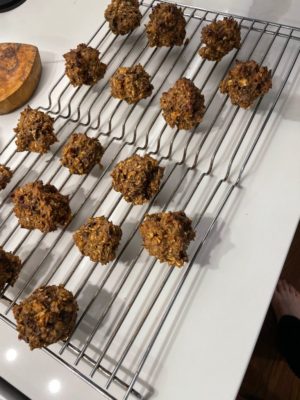
Homemade protein “wads”
The short-burst, high-intensity strength training required a different strategy: meals with enough carbs for energy but balanced with enough protein and fat to keep my glucose stable (since I wasn’t burning fuel over a long period), like salmon, eggs, rice, and sweet potatoes.
Most days, breakfast consisted of two eggs, greens, and cheese, with easy-to-digest fruit. One of my favorite foods is potatoes, but I quickly learned that they gave me a big spike, especially in the morning.
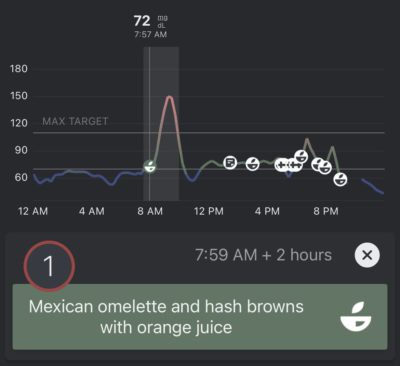
Spike from morning potatoes! (The orange juice probably didn’t help either.)
The training data and experimentation revealed a few findings I could use heading into race day:
- A steady stream of simple carbs during prolonged activity helped me perform my best.
- My body does not like gluten. I’ve avoided gluten for a while because I find it makes me angry and uncomfortable, but nearly all my most significant spikes were from meals that included gluten.
- Hunger doesn’t mean I need food. During times I felt hungry, my glucose profile often showed a peak and steep crash. These crashes between meals were exhausting and signaled hunger pangs that didn’t help lose weight. (My training strategy included weight loss because I knew I had to carry every extra pound up and down the steep hills!)
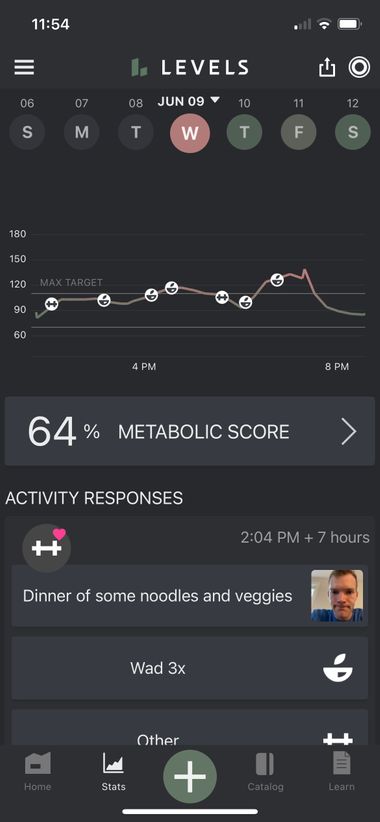
Sustained metabolic response after spacing out fruit and wad intake during a long run.
During the Race: Monitoring my Blood Sugar
The night before the race, I ate beef, egg, potatoes, buttered salmon, carrots, and broccolini. It was a big meal of slow-digesting food to pack in the energy before a long day of running, but with fat and protein to avoid an overnight spike and crash.
I get pre-race jitters, so all I ate the morning of the race was a banana. It provided some simple carbohydrates but didn’t send my blood sugar soaring.
To avoid the energy crash that hits so many first-time ultra runners, I knew I would need to eat even when I didn’t feel like it, aiming for around 200-300 calories per hour. The first few hours of the race, I stuck with high-carb, complex foods: gluten-free bread topped with peanut butter and salt, bacon, and melon. I even got in a non-alcoholic beer. (I knew from training that the usual energy bars and gels would just send me into a glucose spike.)
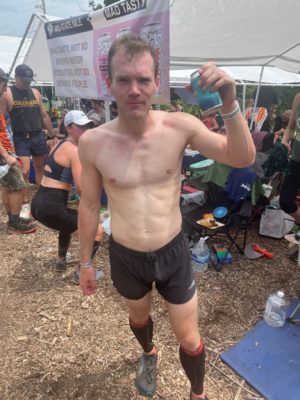
Enjoying the flavor of non-alcoholic beer after four hours of running.
As the hours wore on, the day got hotter, and the intensity ramped up. Suddenly the hills started looking steeper! My glucose levels bottomed out at 83 mg/dL about three hours into the race. It was a signal that my body was depleting glucose faster than I was supplying it, so I switched from the slow-digesting foods to faster-digesting fuel. I mostly ate fruit—watermelon, puréed fruit/veggies pouches—and gluten-free Oreos for the rest of the race. (It may seem odd, but these kinds of junk foods are common during ultras as runners look to quickly replenish carbs with foods that won’t sit in their stomach long. It’s certainly not the only way, but it worked for me.)
My glucose levels slowly rose as the exercise got more intense and the carb-heavy foods hit my system. I hit the top of my target zone (around 112 mg/dL) eight hours and about 24 miles in, where it remained for the next nine hours. Later in the day, I mixed in some bacon for protein with the fruit.
As night began to fall and my knees struggled under the impact of the descents, my pace slowed down until I finally failed to complete the loop within the 20 minutes limit.
The race started at 8:00 in the morning, and my last lap was at 12:20 a.m.
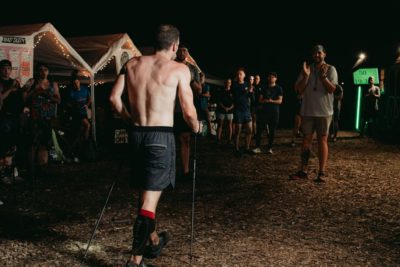
Finishing the race after 16 hours of running!
After 16 hours of running, I completed 54.8 miles, 16,600 feet of vertical gain, and 48 laps. It was good enough to finish 14th overall—far beyond what I thought my body could do.
Immediately after the race, I ate carbs and protein to recover and start getting my nutrition back to normal. Eating entire loaves of bread and boxes of cookies worked during the race, but that’s not my regular diet. That night, I recorded my lowest ever glucose reading: 41 mg/dL. I attributed it to deep REM sleep as my physiological systems went into full recovery mode.
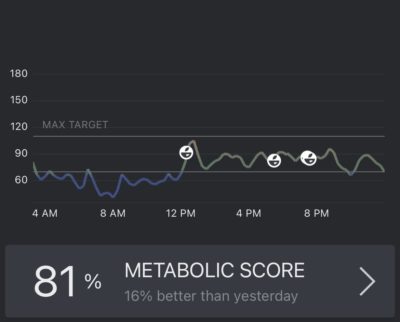
Glucose dipped low the night after the race, perhaps because of the deep REM sleep.
After the Race: My Takeaways
Understanding my metabolic response feels like a superpower. My CGM helped tie together my nutrition, stamina, and fitness training to double my race goal. The data compounded the impact of every training session. It also gave me the peace of mind that my body had the fuel it needed and the space to let me focus on the mental battle of endurance racing.
Now, I can eat big refueling meals without glucose spikes because I know how my body reacts to certain foods, like gluten. I know I have a more stable response when I mix carbohydrates, protein, and fat in meals.
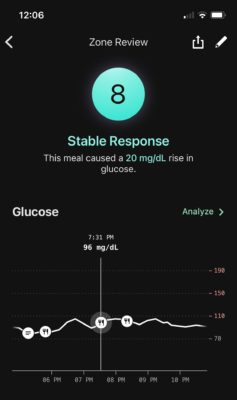
Stable response after a meal of chicken, cucumber salad, coleslaw, and rice.
In the weeks surrounding the race, I had a 60% reduction in high-glucose events. Now I rarely, if ever, see glucose levels above 140 mg/dL. I lost 14 pounds and gained a new level of cardiovascular fitness.
After spending weeks training and monitoring myself, I also learned the value of being present and deliberate when eating. Taking pictures of my food forced me to consider what I was eating. I can look at my glucose history and know why I feel sleepy or get restless sleep.
Understanding my nutrition and exercise allowed me to exceed my goals. Now I’ve set my sights on my next challenge: an Ironman in September!
